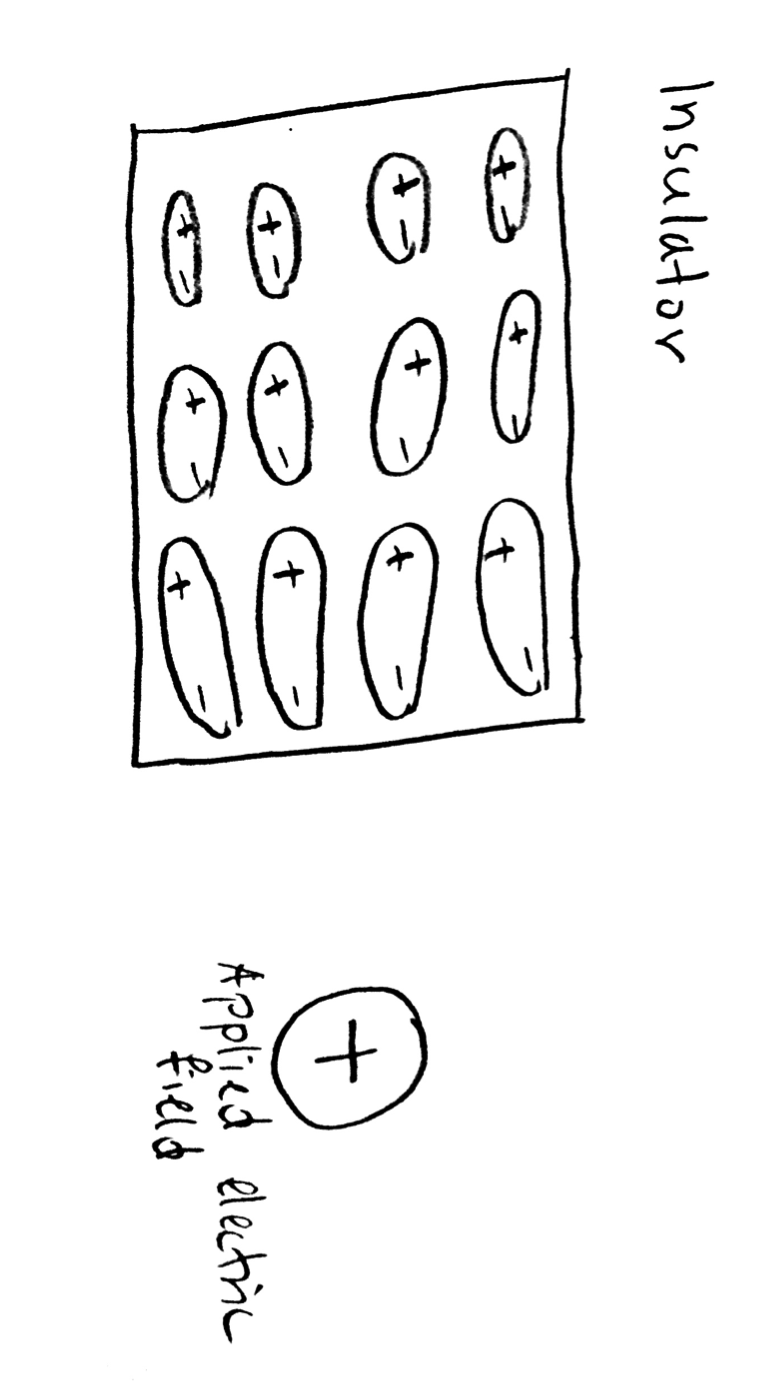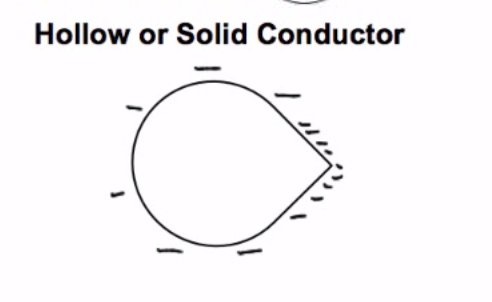Charged Conductor and Charged Insulator: Difference between revisions
| Line 36: | Line 36: | ||
== See also == | == See also == | ||
[http://www.physicsbook.gatech.edu/Charge_Transfer Charge Transfer] This topic talk about the charge transfer between objects | |||
===External links=== | ===External links=== | ||
Revision as of 19:20, 5 December 2015
Understanding the Conductor and Insulator is the foundation and crucial to fully understand the polarization problem.
Basic
All materials are made of atoms that contains electrons and protons. However, at the microscopic level there can be difference in structure that lead to very different behavior when they are exposed to electric field. Conductor and Insulator is what are discussed in the physics 2 classes.
Conductor
A conductor is an object or type of material that allows the flow of electrical current in one or more directions.
Insulator
An electrical insulator is a material whose internal electric charges do not flow freely, and therefore make it nearly impossible to conduct an electric current under the influence of an electric field.
Charge on Conductor
An object made of a conducting material will permit charge to be transferred across the entire surface of the object. If charge is transferred to the object at a given location, that charge is quickly distributed across the entire surface of the object. The distribution of charge is the result of electron movement. Since conductors allow for electrons to be transported from particle to particle, a charged object will always distribute its charge until the overall repulsive forces between excess electrons is minimized.
If the conductor is spherical, charge is evenly distributed on the outside surface.
If the conductor is not spherical, surface charge density is higher where radius of curvature is smaller. (i.e on sharp points or corner of conductor.)
Insulator
In contrast to conductors, insulators are materials that impede the free flow of electrons from atom to atom and molecule to molecule. If charge is transferred to an insulator at a given location, the excess charge will remain at the initial location of charging. The particles of the insulator do not permit the free flow of electrons; subsequently charge is seldom distributed evenly across the surface of an insulator.

The electrons don't need to spread out evenly. Instead, they stay at where they were.
While insulators are not useful for transferring charge, they do serve a critical role in electrostatic experiments and demonstrations. Conductive objects are often mounted upon insulating objects. This arrangement of a conductor on top of an insulator prevents charge from being transferred from the conductive object to its surroundings.
See also
Charge Transfer This topic talk about the charge transfer between objects
External links
Explenation of why does charge concentrate at a point on a conductor
References
http://www.physicsclassroom.com/class/estatics/Lesson-1/Conductors-and-Insulators
[http://www.schoolphysics.co.uk/age16-19/Electricity%20and%20magnetism/Electrostatics/text/Electric_charge_distribution/index.html http://www.schoolphysics.co.uk/age16-19/Electricity%20and%20magnetism/Electrostatics/text/Electric_charge_distribution/index.html
